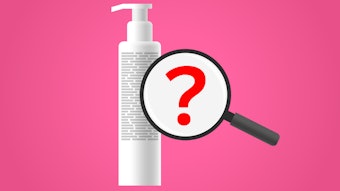Visitors to the European Chemicals Agency (ECHA) Web site discovered the "REACH-IT" portal up and running on June 1, 2008, for use by REACH pre-registrants. According to the ECHA, almost 5,000 data files for pre-registration were submitted during the first week of operations. However, problems using this Web-based information technology system created for REACH registrations, i.e., "REACH-IT," were experienced on both sides—by industry pre-registrants and the ECHA.
Pre-registrants dealt with deficiencies using the IUCLID 5 software intended for multiple REACH-IT entries. The ECHA reported that for 2% of the pre-registrations, substance identity information was not provided in line with the ECHA guidelines and many of the Product and Process Oriented Research and Development (PPORD) dossiers submitted could not be further processed due to inadequate or incomplete information.
According to the ECHA, technical improvements are ongoing to the REACH-IT system. Currently, a single substance can be pre-registered online via the REACH-IT portal, but the pre-registration of several substances in one file will be available at a later stage. Also, temporary submission procedures exist for PPORD notifications, inquiries and registrations, which need to be sent to ECHA either by e-mail or by registered mail/courier service.
In order to address the proper filing of dossiers through the temporary submission procedures, the manual "Data Submission Manual 4: How to Submit a Valid Dossier to the ECHA and Complete the Dossier Header" was published.
Issues for specific nonphase-in substances used as cosmetic ingredients were mentioned in the REACH Update issue of November 2007:
Under the Directive on Dangerous Substances (Article 1 of Directive 67/548, as amended by Directive 92/32), non-EINECS listed ingredients did not have to be notified if they were placed on the market as cosmetic products in their final form intended to be used by consumers.
This no longer applies under REACH and these ingredients, when manufactured or imported in quantities above one ton, must be registered as of June 1, 2008, if they do not fall under an exemption. Extended registration deadlines do not apply since these ingredients are not phase-in substances.
Recently, the European Commission informed the ECHA about this specific issue for cosmetic ingredients. As a consequence, the ECHA encourages companies manufacturing or importing these substances (individually, in preparations, or in articles in a quantity above one ton/year) to contact the ECHA by signing up, with an inquiry to follow. With this approach, details on the status of materials and further information will be provided to the companies concerned. A company sign-up can be completed via REACH-IT, and inquiries for temporary procedures (see above) apply.
Key Summary
- On June 1, 2008, REACH-IT was activated on the ECHA Web site
- IT problems experienced with the online system require further technical improvement
- Temporarily, only single substances can be pre-registered online via the REACH-IT portal
- A bulk pre-registration on REACH-IT using IUCLID 5 or XML will be made available later
- Temporary submission procedures exist for PPORD notifications, inquiries and registrations
- Temporarily PPORD notifications, inquiries and registrations should be submitted to the ECHA either by e-mail or by registered mail/courier service
- The issue of specific nonphase-in substances used as cosmetic ingredients has been addressed by the European Commission
- ECHA invites companies manufacturing or importing these substances to contact the ECHA by signing up, followed by an inquiry
Do you have further questions? Visit C&T magazine’s REACH Round Table.
Additional Useful Information
- New Guidance Documents on REACH: Guidance on registration (2nd update) - May 26, 2008
- Guidance for articles - May 26, 2008
- Guidance on information requirements and CSA - May 29, 2008
- Guidance for monomers and polymers (2nd update) - May 29, 2008
-Annelie Struessman, PhD, CONUSBAT
*Readers are reminded that the text of the REACH Regulation (EC) No 1907/2006 is the only authentic legal reference. The information in this column does not constitute legal advice.










